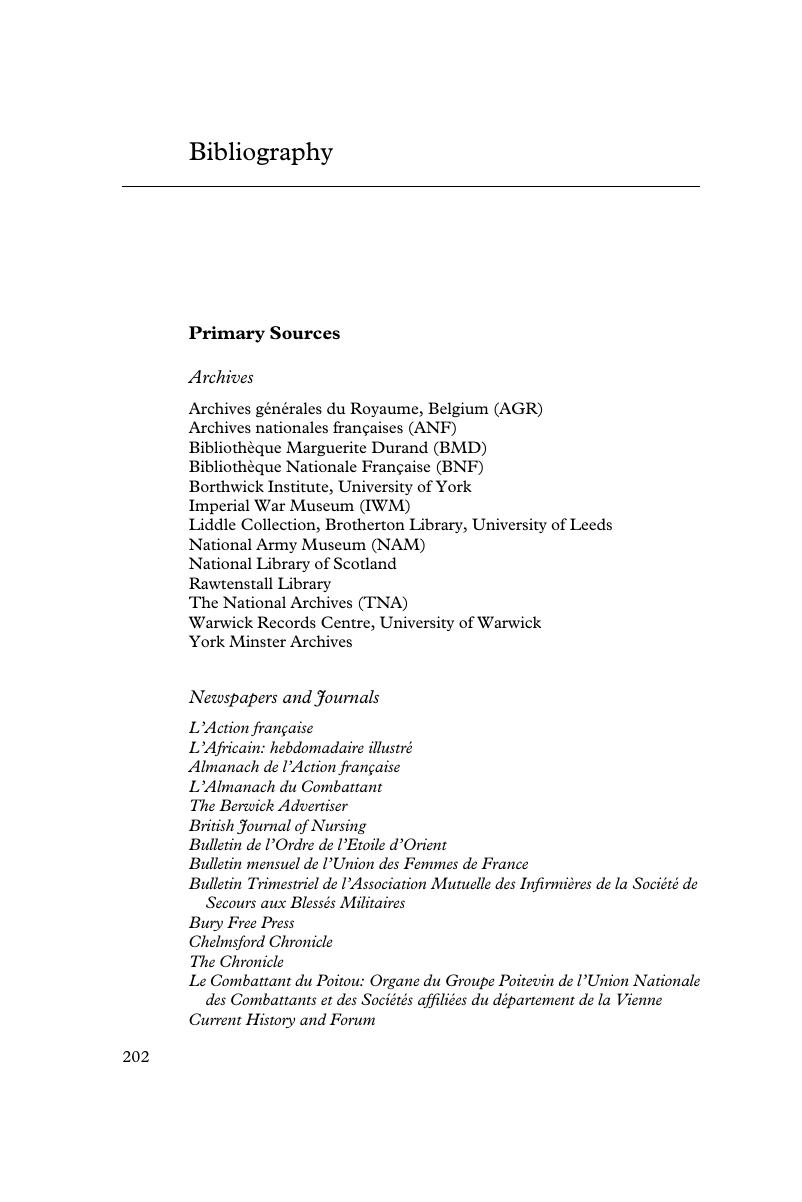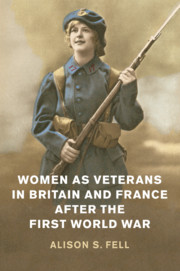Book contents
- Women as Veterans in Britain and France after the First World War
- Studies in the Social and Cultural History of Modern Warfare
- Women as Veterans in Britain and France after the First World War
- Copyright page
- Contents
- Figures
- Acknowledgements
- Introduction
- 1 Women as Veterans in the Commemorative Landscapes of Interwar Britain and France
- 2 The Afterlives of First World War Heroines
- 3 ‘That Glorious Comradeship’
- 4 Writing as a Veteran
- 5 Women’s Wartime Industrial Action and the Limits of Female Veteran Identity
- Conclusion
- Bibliography
- Index
- References
Bibliography
Published online by Cambridge University Press: 23 June 2018
- Women as Veterans in Britain and France after the First World War
- Studies in the Social and Cultural History of Modern Warfare
- Women as Veterans in Britain and France after the First World War
- Copyright page
- Contents
- Figures
- Acknowledgements
- Introduction
- 1 Women as Veterans in the Commemorative Landscapes of Interwar Britain and France
- 2 The Afterlives of First World War Heroines
- 3 ‘That Glorious Comradeship’
- 4 Writing as a Veteran
- 5 Women’s Wartime Industrial Action and the Limits of Female Veteran Identity
- Conclusion
- Bibliography
- Index
- References
Summary

- Type
- Chapter
- Information
- Publisher: Cambridge University PressPrint publication year: 2018

